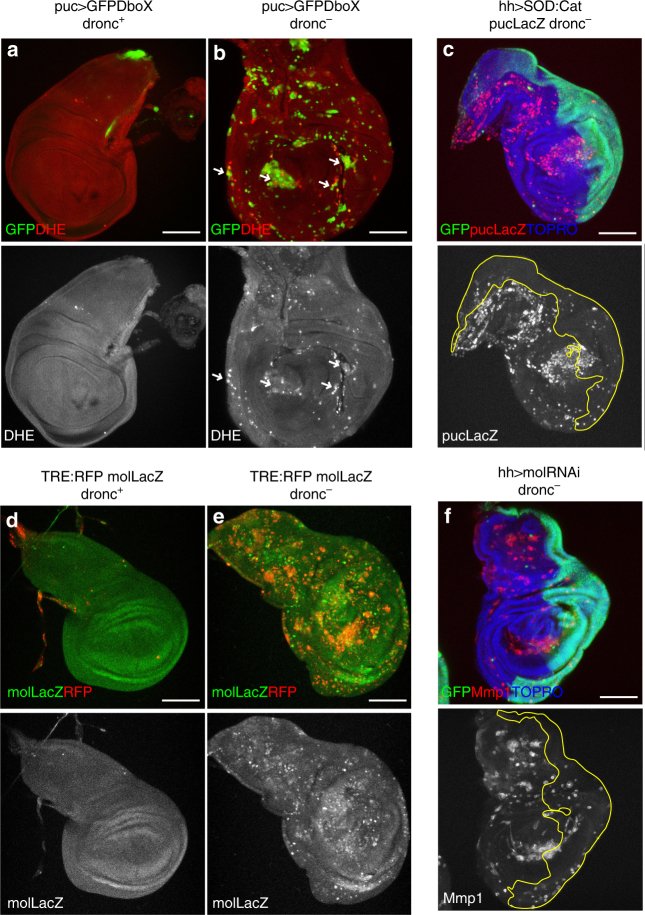Fig. 2.
ROS and moladietz are involved in JNK persistent activity. a, b Wing discs stained 96 h after irradiation with DHE to detect ROS, a dronc+ control (n = 10) and b dronc− mutant (n = 30). We observe DHE staining in dronc− mutant disc (b, arrows) in cells that present JNK activity, labelled by the expression of UAS-GFPDbox, but not in (a) dronc+ control. c Wing disc of the genotype: UAS-SOD:UAS-Cat/UAS-GFPtubGal80ts;dronci24/dronci29hh-Gal4 96 h after irradiation (n = 14) (after irradiation, larvae were raised for 24 h at 17 °C to allow ROS activation and then transferred to 29 °C for 72 h to block ROS production). We observe a reduction in the activation of JNK (puc-LacZ, red) only in the posterior compartment (GFP, green), where SOD:Cat are expressed. Wing discs of the genotypes: d (n = 9) TRE:RFP/mol-LacZ and e (n = 22) TRE:RFP/mol-LacZ;dronci24/dronci24 96 h after irradiation where mol-LacZ expression (green) is maintained in dronc− mutants (e) in cells that show JNK activity (TRE:RFP, red). No RFP or ectopic mol-LacZ is observed in (d) dronc+ control. f Wing disc of the genotype: UAS-molRNAi/UAS-GFPtubGal80ts;dronci24/hh-Gal4dronci29 (n = 7) 96 h after irradiation. As in c, the mol RNAi was expressed the last 72 h after irradiation. Reduction of the JNK activity (Mmp1, red) is observed in the posterior compartment (green), but not in the anterior. Scale bars are 100 μm

